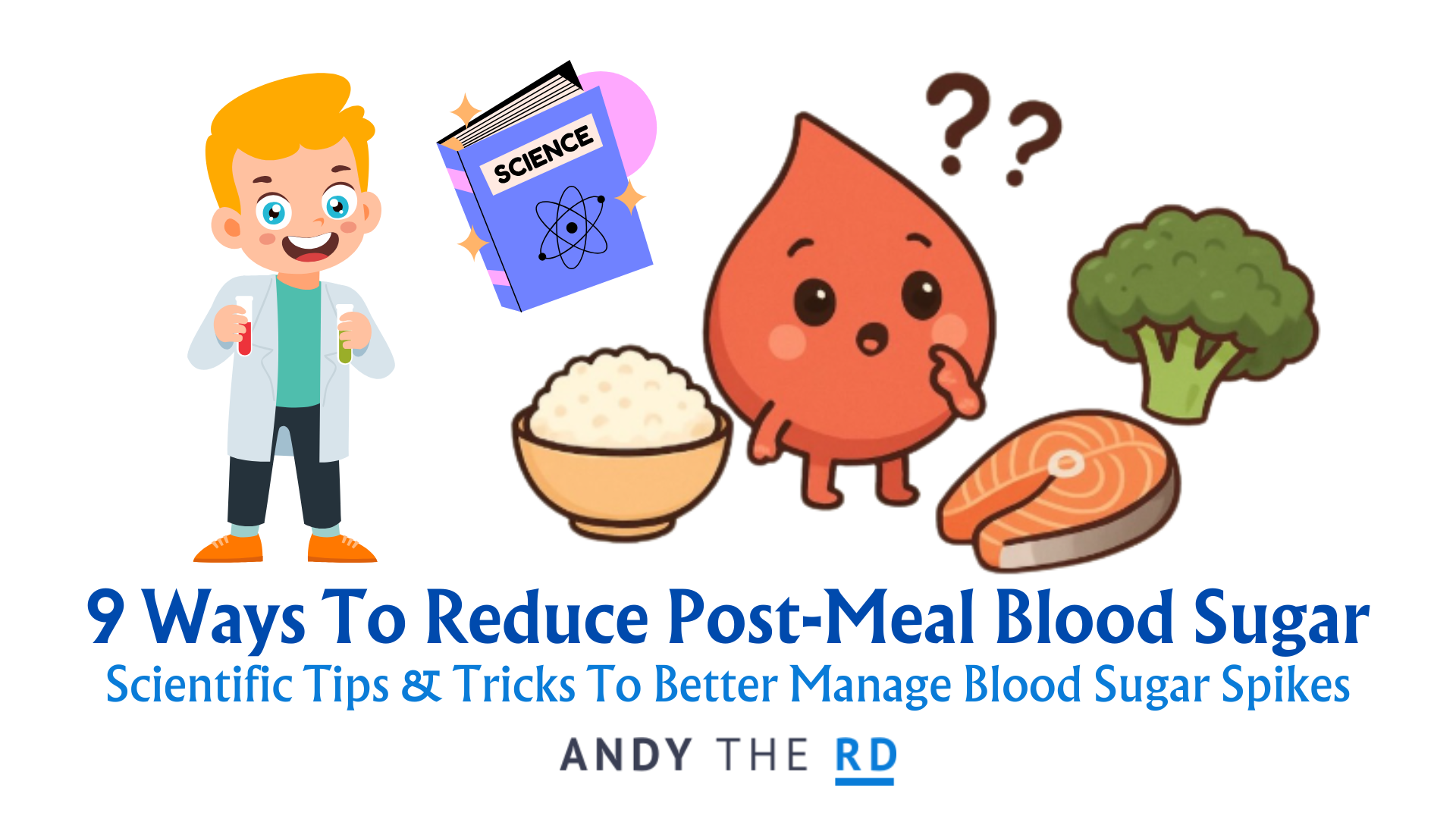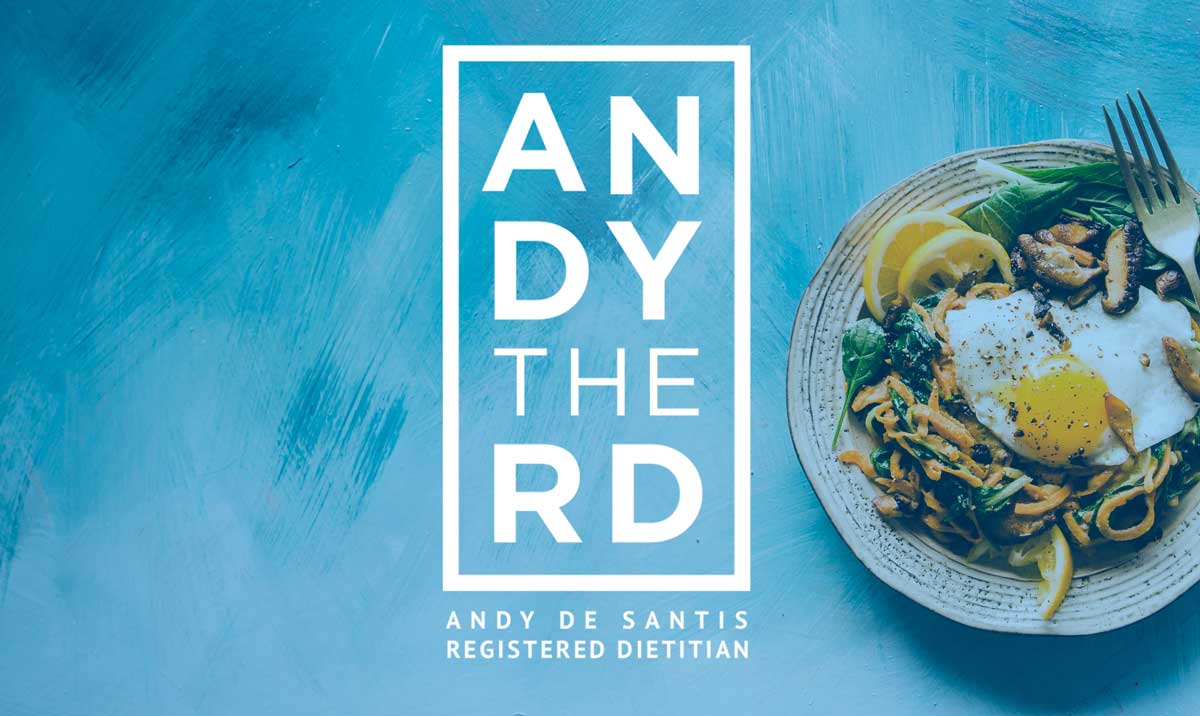Monitoring your blood sugar levels is part of managing your diabetes. The amount that your blood sugar rises after eating a meal is known as the glycemic response, which is influenced by the types of food you have in your meal (Murillo et al., 2022).
Here are some culinary strategies to reduce the impact of carbohydrate intake on blood sugar levels:
Fiber
Add more fiber-rich foods to your meals. Fiber is a type of carbohydrate that is not digested and does not directly contribute to raising your blood sugar levels. Including fiber-rich foods in your meals can lessen the effect that other foods have on your blood sugar levels, especially when eating a high carbohydrate meal (Abutair et al., 2016). Examples of fiber-rich food include:
- Legumes (beans, chickpeas, lentils)
- Vegetables (broccoli, kale, cauliflower)
- Whole Grains (Oats, Brown Rice, Quinoa)
- Nuts and Seeds (Almonds, Walnuts, Chia Seeds)
Fat
Include more good fats in your meals. Having more good fats in your meal reduces the rate at which the food enters your intestines and is absorbed. This includes reducing the rate at which any carbohydrates in the meal are also absorbed (Bell et al., 2015). For example, eating pasta with a sauce higher in fats like olive oil will result in a smaller impact on blood sugars (Chiavaroli et al., 2021).
Protein
Always have a source of protein. Studies have shown that increased protein intake improves blood glucose response in people with type 2 diabetes (Ganon et al., 2003). Having a good source of protein in your meal reduces its glycemic response by binding to the starch from carbohydrates to slow down its digestion and absorption (Miao & Hamaker, 2021). It also promotes insulin release, which is the key hormone in maintaining your blood sugar levels (Bozzetto et al., 2019).
Acetic acid (vinegar)
Add acids like vinegar or lemon juice to your meal. Having acetic acid before or with a carbohydrate-rich meal will lessen the amount that it raises your blood sugar levels (Shishehbor et al., 2017). Acetic acid slows down digestive enzyme activity, which in turns slows down digestion and absorption of carbohydrates (Santos et al., 2019).
Level of ripeness of fruits
Eat fruits when they are less ripe. Fruit is sweeter when it is more ripe because most of its starches have broken down into sugars. Eating fruit when they are less ripe will make it harder to digest the starch, and this will reduce the amount that it raises your blood sugar levels (Hermansen et al., 1992).
Degree of processing
Eat less processed grains and fruits that are closer to their original form. Grains and fruits that are less processed and broken down raise your blood sugar levels less. When these foods are less broken down, they take longer for our body to break down and digest, which also reduces the amount that it increases our blood sugar levels. For instance, steel cut oats have a lower glycemic effect than oat flour (Mackie et al., 2017).
Cooking
Cook carbohydrates less and use less water. Cooking carbohydrates less, like cooking pasta al dente or using less water to cook rice reduces the amount that it raises your blood sugar levels (Wu et al., 2020). This is because letting the starches in carbohydrates absorb more water allows it to gelatinize, making it easier for our bodies to digest and absorb, resulting in a larger glycemic response.
Storage
Eat carbohydrates after they have cooled for a day. Allowing your carbohydrate dishes like rice, pasta and potatoes to cool before eating it changes their structure into one that is more difficult to digest (Raigond et al., 2014). This lowers the amount that it raises your blood sugars even if it is reheated and eaten later on.
Consumption order
Eat carbohydrates last, after eating your proteins, fats and vegetables. This has the greatest effect on changing the amount that your meal raises your blood sugar levels (Nesti et al., 2019). This is especially effective when eating protein before your carbohydrates (Nishino et al., 2018).
Conclusion
Having a variety of food is essential to maintaining a well-balanced diet, but it can also help with managing your blood sugar levels. The amount of carbohydrates eaten in a meal isn’t the only thing that determines a meal’s glycemic response. The components of the meal, how you prepare the food and when you eat the different components can also impact its effect on your blood sugar. Give these tips a try when you have your next meal and see how it affects your blood sugar!
Author Credits
Today’s article was written by my new, and very diligent, content volunteers Vivien Seguros & Sean Ling.
References
Abutair, A. S., Naser, I. A., & Hamed, A. T. (2016). Soluble fibers from psyllium improve glycemic response and body weight among diabetes type 2 patients (randomized control trial). Nutrition Journal, 15(1). https://doi.org/10.1186/s12937-016-0207-4
Bell, K. J., Smart, C. E., Steil, G. M., Brand-Miller, J. C., King, B., & Wolpert, H. A. (2015). Impact of fat, protein, and glycemic index on postprandial glucose control in type 1 diabetes: Implications for intensive diabetes management in the continuous glucose monitoring era. Diabetes Care, 38(6), 1008–1015. https://doi.org/10.2337/dc15-0100
Bozzetto, L., Alderisio, A., Clemente, G., Giorgini, M., Barone, F., Griffo, E., Costabile, G., Vetrani, C., Cipriano, P., Giacco, A., Riccardi, G., Rivellese, A. A., & Annuzzi, G. (2019). Gastrointestinal effects of extra-virgin olive oil associated with lower postprandial glycemia in type 1 diabetes. Clinical Nutrition, 38(6), 2645–2651. https://doi.org/10.1016/j.clnu.2018.11.015
Chiavaroli, L., Di Pede, G., Dall’Asta, M., Cossu, M., Francinelli, V., Goldoni, M., Scazzina, F., & Brighenti, F. (2021). The importance of glycemic index on post-prandial glycaemia in the context of mixed meals: A randomized controlled trial on pasta and rice. Nutrition, Metabolism and Cardiovascular Diseases, 31(2), 615–625. https://doi.org/10.1016/j.numecd.2020.09.025
Gannon, M. C., Nuttall, F. Q., Saeed, A., Jordan, K., & Hoover, H. (2003). An increase in dietary protein improves the blood glucose response in persons with type 2 diabetes. The American Journal of Clinical Nutrition, 78(4), 734–741. https://doi.org/10.1093/ajcn/78.4.734
Hermansen, K., Rasmussen, O., Gregersen, S., & Larsen, S. (1992). Influence of ripeness of banana on the blood glucose and insulin response in type 2 diabetic subjects. Diabetic Medicine, 9(8), 739–743. https://doi.org/10.1111/j.1464-5491.1992.tb01883.x
Mackie, A. R., Bajka, B. H., Rigby, N. M., Wilde, P. J., Alves-Pereira, F., Mosleth, E. F., Rieder, A., Kirkhus, B., & Salt, L. J. (2017). Oatmeal particle size alters glycemic index but not as a function of gastric emptying rate. American Journal of Physiology-Gastrointestinal and Liver Physiology, 313(3). https://doi.org/10.1152/ajpgi.00005.2017
Miao, M., & Hamaker, B. R. (2021). Food matrix effects for modulating starch bioavailability. Annual Review of Food Science and Technology, 12(1), 169–191. https://doi.org/10.1146/annurev-food-070620-013937
Murillo, S., Mallol, A., Adot, A., Juárez, F., Coll, A., Gastaldo, I., & Roura, E. (2022). Culinary strategies to manage glycemic response in people with type 2 diabetes: A narrative review. Frontiers in Nutrition, 9. https://doi.org/10.3389/fnut.2022.1025993
Nesti, L., Mengozzi, A., & Tricò, D. (2019). Impact of nutrient type and sequence on glucose tolerance: Physiological insights and therapeutic implications. Frontiers in Endocrinology, 10. https://doi.org/10.3389/fendo.2019.00144
Nishino, K., Sakurai, M., Takeshita, Y., & Takamura, T. (2018). Consuming carbohydrates after meat or vegetables lowers postprandial excursions of glucose and insulin in nondiabetic subjects. Journal of Nutritional Science and Vitaminology, 64(5), 316–320. https://doi.org/10.3177/jnsv.64.316
Raigond, P., Ezekiel, R., & Raigond, B. (2014). Resistant starch in food: A Review. Journal of the Science of Food and Agriculture, 95(10), 1968–1978. https://doi.org/10.1002/jsfa.6966
Santos, H. O., de Moraes, W. M. A. M., da Silva, G. A. R., Prestes, J., & Schoenfeld, B. J. (2019). Vinegar (acetic acid) intake on glucose metabolism: A narrative review. Clinical Nutrition ESPEN, 32, 1–7. https://doi.org/10.1016/j.clnesp.2019.05.008
Shishehbor, F., Mansoori, A., & Shirani, F. (2017). Vinegar consumption can attenuate postprandial glucose and insulin responses; a systematic review and meta-analysis of clinical trials. Diabetes Research and Clinical Practice, 127, 1–9. https://doi.org/10.1016/j.diabres.2017.01.021
Wu, W., Qiu, J., Wang, A., & Li, Z. (2019). Impact of whole cereals and processing on type 2 diabetes mellitus: A Review. Critical Reviews in Food Science and Nutrition, 60(9), 1447–1474. https://doi.org/10.1080/10408398.2019.1574708



